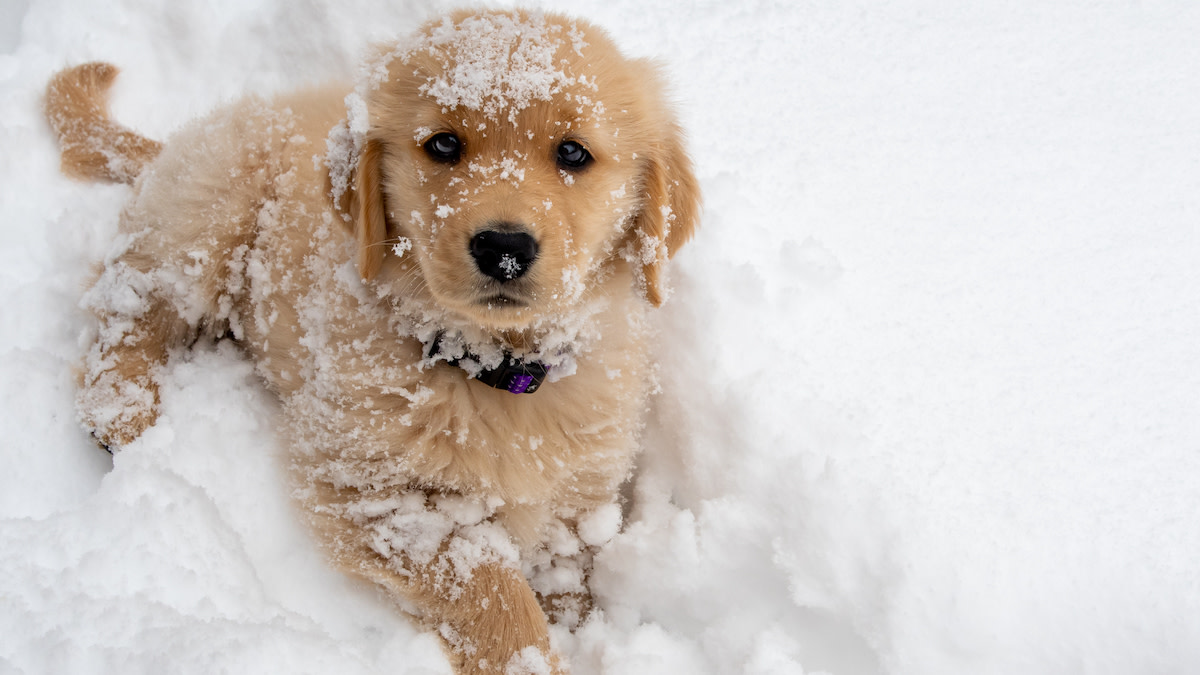
Anyone who has raised kids understands that too much pent-up energy will lead to poor behavior. There’s a reason that grade-schoolers get recess in the middle of the day. Puppies are no different, and if you want to experience the worst a young dog has to offer, bring one home in the winter.
This will obviously hit different if you live in Minnesota or Maine versus maybe Florida or Texas. In warm, southern states, the summer might actually be the most difficult time to talk yourself into taking your pup out. Even with that seasonal swap, the negative behaviors that stem from too much energy will feel an awful lot like the issues that many of us deal with throughout the snowy months.
Dogs need physical activity, of course. They also need mental stimulation, as well. This is true year-round and becomes a necessity when the weather conspires to keep you and your dog homebound. The good news with this is that you don’t have to have a pup that chews up your furniture and gets into general mischief all day long. You can manage their energy, you just need to get creative.
Canine Athletes
My wife would admit she is a mediocre cook, and we’d all agree. One of her specialties is spaghetti which involves boiling noodles and dumping store-bought sauce on top. That’s it. Even with a freezer full of ground venison to mix into the sauce, or the opportunity to mince up some fresh garlic or chop some portobello mushrooms, she doesn’t.
Her spaghetti is the equivalent of taking your average sporting breed pup on a walk. It’s the lowest bar you can clear, and it’s something we often think is just barely good enough. For a 10-week-old pup, maybe. Walks are good for sniffing around and for some leash work, but they don’t do much for burning energy.
This might not be readily evident with a young pup, but once you get a dog that is bumping up on four or five months, you’ll see. They need more.
Finding a place to let a pup run off-leash is a good start. Even if you have to trudge through 30 inches of snow. If your dog isn’t trustworthy enough yet, which is pretty common with pups, a long check cord is ideal. You can clip it up to your pup and let them run. A 20- or 30-footer makes it easy to catch the pup if you need to, but won’t interfere with their running.
As they get older and better with recall, dealing with at least some of their energy becomes pretty easy. They need the opportunity to run a couple of times each day. Whether this involves training sessions or a stroll through the woods, pups that get to stretch their legs will behave better at home. Keep in mind, however, that this is just a start. If you don’t address their brains, you’ll have a hard time really wearing them out once they get old enough to want to work.
Brain Games
Dogs like solving problems. This is why multi-step toys are so popular. A dog that has to roll a toy around to get a treat is using his brain. A dog that has to find an antler in your yard or down the hallway of your house is using his brain. Challenge a dog’s mind, even a young pup, and you’ll start to quell the pent-up urge to do something destructive or attention seeking.
With my bird dogs, I like to build in little training exercises that involve my pups finding something. This is the puzzle they solve, and some of them are as easy to do in the yard or the neighborhood park as they are in the living room. This is important because part of the reason young dogs need to manage their energy in the winter is because we simply don’t want to take them outside enough.
Any game that involves seeking out a reward is a winner. Almost all pups take to this if you’re in the treat training stage. Better yet, nearly all working dogs will take to this far beyond the stage where they need a caloric reward. Sporting dogs are genetically hard-wired to love looking for things, and if you facilitate that on a daily basis, they’ll be generally calmer.
It’s not rocket science, but it is easy to ignore. That is, until you find your favorite book in 1000 pieces on the floor or simply can’t stand your pup’s constant whining. Before those behaviors manifest themselves in the cold winter months, make a plan to head them off. Think about physical and mental stimulation, and then pay attention to your young dog’s behavior so you can tweak the program.
This will greatly improve your dog’s quality of life and make the intolerable into something much more tolerable.





Conversation